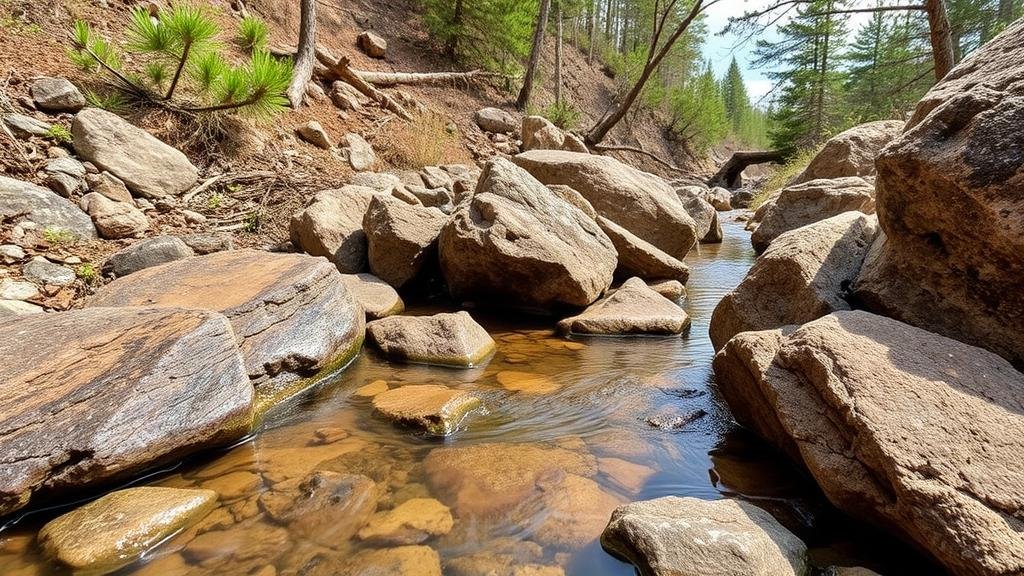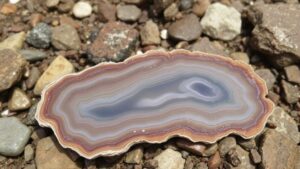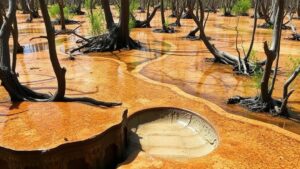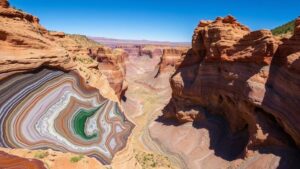Crystal Rivers: Unearthing Quartz and Amethyst in Hidden Streambeds
Crystal Rivers: Unearthing Quartz and Amethyst in Hidden Streambeds for Rockhounds and Mineral Collectors
For rockhounds and mineral collectors, the thrill of finding quartz and amethyst in natural settings is an exhilarating experience. Crystal rivers, which meander through diverse geological landscapes, often hold hidden treasures for those willing to explore. This article delves into the science, methods, and ethical considerations of collecting these stunning minerals.
The Allure of Quartz and Amethyst
Quartz is one of the most abundant minerals in the Earths crust, comprising about 12% of its volume. Not only is it widely recognized for its beauty, but it also has an array of industrial applications. Amethyst, a purple variety of quartz, is treasured for its aesthetic appeal and is the traditional birthstone for February.
Quartz and amethyst often form in hydrothermal veins, igneous rocks, and sedimentary deposits. Their presence in streambeds signifies that the minerals have weathered from their original sources, making them accessible to collectors.
Identifying Ideal Locations
Finding quartz and amethyst in riverbeds requires strategic planning and research. Here are key attributes to consider:
- Geological Composition: Look for areas with granite or metamorphic rocks, as these often host quartz crystals.
- Stream Flow: Fast-moving water can erode and transport minerals from upstream, redistributing them in accessible locations.
- Local Regulations: Always confirm whether collecting is permitted in specific areas. National and state parks typically have strict rules regarding mineral extraction.
Materials and Tools for Collecting
Equipping yourself with the right tools can significantly enhance your collecting experience. Essential materials include:
- Digging Tools: A trowel, rock hammer, and shovel can aid in uncovering buried gems.
- Safety Gear: Gloves, sturdy shoes, and protective eyewear help prevent injuries while navigating rocky terrains.
- Cleaning Supplies: A soft brush and water are essential for preserving the integrity of delicate specimens.
Techniques for Successful Collection
To maximize your chances of finding quality specimens, consider the following techniques:
- Surface Collecting: Start by thoroughly searching exposed areas in dry riverbeds where minerals may be visible.
- Stream Panning: Similar to gold panning, this method involves using a pan to sift through sediment for crystals.
- Digging in Gravel Bars: These areas often accumulate heavier minerals, increasing your chances of finding quartz and amethyst.
Recognizing Quality Specimens
Knowing how to identify quality quartz and amethyst is crucial for collectors. Look for:
- Clarity: Higher clarity often correlates with greater value. Specimens should display minimal inclusions.
- Color Saturation: For amethyst, deeper purples are more desirable. The presence of zoning can also enhance a crystals beauty.
- Crystal Form: Well-formed crystals with distinct faces are more collectible than rough or irregularly shaped stones.
Ethical Collecting Practices
Sustainable and responsible collecting is essential to protect natural resources. Here are a few practices to keep in mind:
- Collect Responsibly: Avoid damaging habitats or ecosystems while searching for minerals.
- Follow Regulations: Adhere to local laws regarding mineral collection and ensure you have necessary permits.
- Practice Leave No Trace: Clean up after yourself to preserve the natural beauty of the landscape.
Real-World Applications and Community Engagement
Many hobbyists transition their passion for collecting into educational pursuits. Engaging with local mineral clubs or attending gem fairs can enhance your knowledge and provide opportunities to showcase and trade your finds. Also, educational institutions sometimes offer classes on mineralogy that can provide in-depth insight into the science behind your passion.
Actionable Takeaways
Crystal rivers are a hidden paradise for rockhounds and mineral collectors eager to unearth quartz and amethyst. By understanding geological contexts, employing the right tools and techniques, and adhering to ethical practices, collectors can enrich their experience and contribute positively to the environments they explore. Remember to stay informed about local regulations, connect with fellow enthusiasts, and appreciate the natural beauty surrounding you.



